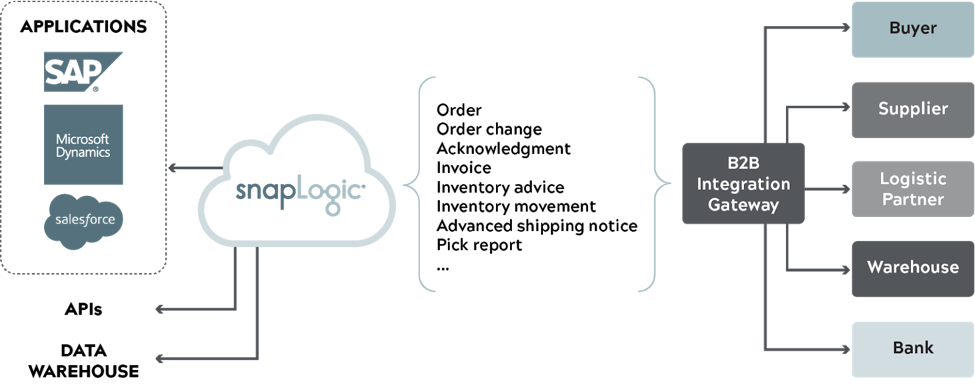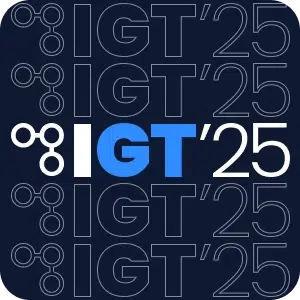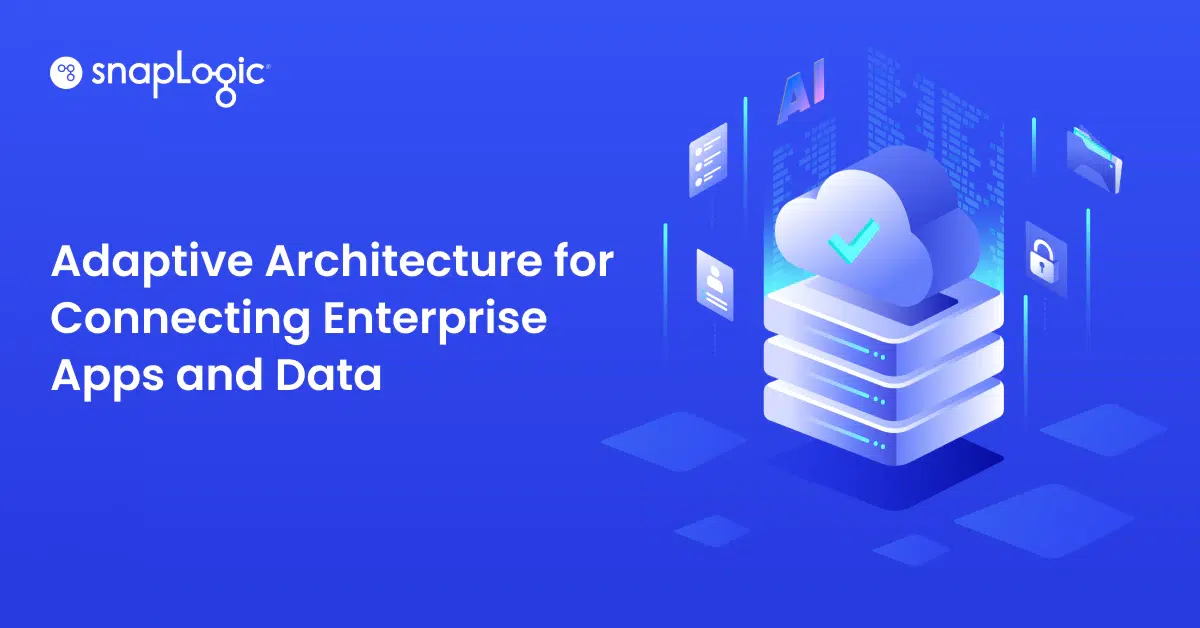*SnapLogic’s B2B integration has evolved. Instead of EDI Snaps as described in this post, customers can use File Reader/Writer Snaps from the Binary Snap Pack for an FTP server to connect to the EDI gateway. SnapLogic still support many of the same use cases as described in this blog post*
B2B integration runs as far back as the 1960s. In the decades since, B2B requirements expanded and became more complicated as the industry shifted. The need for additional integration capabilities underscores how integration as a service (iPaaS) and B2B Gateway Software (BGS) together contribute to successful B2B integrations.
Without cloud-based, modern B2B integration, organizations require a significant effort to maintain and use legacy B2B systems. These challenges increase the time needed to onboard and manage partners, leading to missed transaction deadlines and fewer revenue opportunities. User productivity also takes a hit when legacy B2B systems are used, leading to increased time-to-market and increased TCO.
SnapLogic for B2B Integration
SnapLogic is at the forefront when it comes to building modern and cloud-driven B2B integrations. SnapLogic for B2B Integration enables organizations to improve key business processes with external partners and create a standard method for communicating and exchanging business documents with suppliers and partners.

Organizations can now automate partner onboarding and integrations along their supply chain using the SnapLogic for B2B Integration solution. Additionally, SnapLogic makes it easy to integrate B2B systems with thousands of endpoints such as SAP, NetSuite, Microsoft Dynamics 365, or other data sources within the same UI, eliminating the need for disparate integration systems. You can build out EDI integrations using SnapLogic’s EDI Snap Pack and initiate B2B transactions such as creating orders and/or invoices and sending them to various systems such as an ERP. These Snaps include:
- EDI Get Transaction Snap: Retrieves all transaction data from the EDI gateway
- EDI Create Transaction Snap: Creates EDI transactions in the EDI gateway
Key business benefits of SnapLogic for B2B Integration
- Effectively manage your partners: Scale to hundreds of trading partners with effective partner management. The B2B Gateway simplifies the connection and onboarding of trading partners with a UI-driven approach.
- Seamlessly transact with any partner: Transact with any trading partner via supported EDI standard formats, such as X12, EDIFACT, HL7, RosettaNet, TRADACOMS, and SWIFT.
- Use standard protocols: Easily exchange documents with standard EDI messaging protocols, including AS2, SFTP, HTTPs, VAN and others.
- Speed up transactions with out-of-the-box EDI document support: Automate partner transactions with EDI transaction sets for retail (810, 850, etc.), transportation (204, 210, etc.), warehousing (940, 943, etc.), and more.
- Keep all transaction trails for auditing: Keep track of every transaction through an audit trail containing an update of events. Receipt of this audit trail is verified by users to acknowledge awareness of events.
- Enable self-service: Build and monitor B2B integrations without the need of specialized resources and increase cost savings.
- Harness a modern integration platform: Access the platform from a web browser and use the drag-and-drop interface for all your applications, data, and B2B integrations.
Use case: Order to cash
A typical B2B integration is “Order to Cash,” which can be automated with SnapLogic for B2B integration as shown below:
A buyer places a purchase order (PO) and the PO is usually sent from an ERP system or, alternatively, the PO is sent via an SFTP to place it into a folder. The EDI gateway picks it up, converts the EDI document into a JSON document. The EDI Get Transaction Snap then reads the JSON document and sends it to the vendor’s ERP system. A PO acknowledgement (855) is then sent back to the buyer.
Once the order is shipped to the buyer, the vendor sends an 810 invoice. The EDI Create Transaction Snap is then used to create this invoice transaction inside the EDI Gateway. The gateway then converts it into an EDI document, which is then sent to the buyer’s SFTP folder location or an ERP application.
Inbound EDI Transaction Flow (SnapLogic pipeline flow for sending PO)
Outbound EDI Transaction Flow (SnapLogic pipeline flow for sending Invoice)

SnapLogic for B2B Integration simplifies B2B integration by enabling users with a self-service integration approach to automate use cases like “order to cash’’ using EDI Snaps along the integration pipelines. Partner onboarding through SnapLogic for B2B Integration is also made easy with effective partner management that can scale to hundreds of trading partners, so organizations can quickly perform B2B transactions and generate more revenue.
Finally, the combination of SnapLogic’s UI paradigm approach and modern cloud platform eliminates the need for specialized skill sets, empowering even a business or citizen integrator to create B2B integrations. a reduce total cost of operations. It also provides comprehensive connectivity for application, data, APIs and big data integration to increase productivity and time-to-value.
To learn more about SnapLogic for B2B Integration, watch the EDI Snap Pack video.














